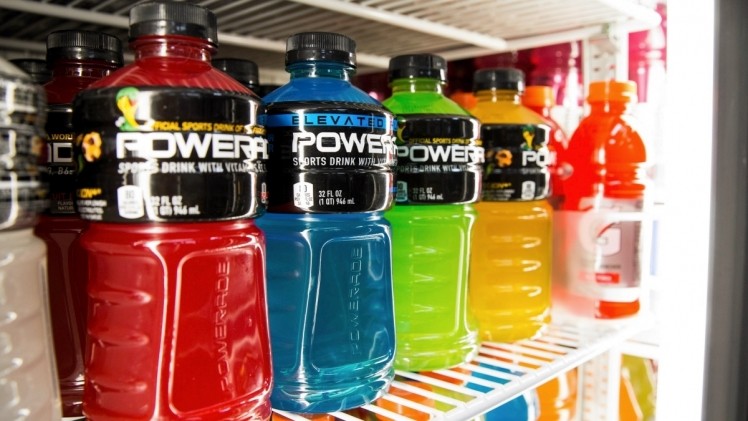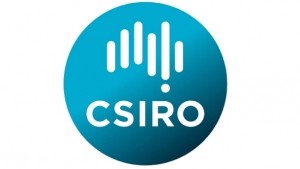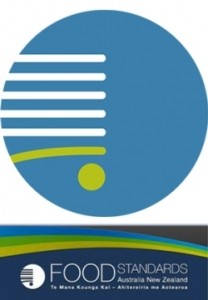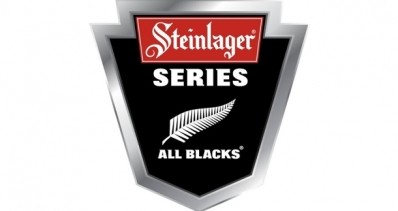This week Down Under
Powerade still winning in race for sports drink supremacy

New figures show that 1.5m Australians consume at least one sports drink a week, equivalent to 8% of the population.
Twice as many men as women choose the likes of Powerade, Gatorade and Staminade, while, somewhat unsurprisingly, under-25-year-olds are most likely to consume them.
Powerade, which is consumed by almost 60% of sports drink drinkers, leads the pack, while rival Gatorade is chosen by 33%. Australasian brand Maximus comes a distant third, with 7% of the market, says Roy Morgan Research, which carried out the study.
In addition to the “fitspiration” that characterises much of its marketing, the sports drink category distinguishes itself from other non-alcoholic beverages by emphasising its sports-science credentials, including special formulas, isotonic qualities, electrolytes and so on.
This has not gone unnoticed by sporty Australians, says Andrew Price of the research agency.
“While our data does not tell us whether sports drinks actually improve sporting performance, it does reveal that people who practice sport are much more likely than the average Australian to consume them.
“Some brands have an even stronger sporting connection through sponsorship arrangements, such as Powerade’s partnership with the NRL and Gatorade’s association with Cricket Australia and the AFL,” said Price.
Those who play sport are noticeably more likely to drink sports drinks than the average Aussie. Of these, 28% of those who play baseball, 24% who play rugby union, and 22% who play Australian rules football consume at least one sports drink each week—all well above the national average.
Nutrition information panels to appear on Lion’s beer brands
Lion will be the first Australian brewer to add nutrition information panels to bottles and cartons across its beer portfolio.
The company says all the 887m bottles of beer it produces each year will carry information on sugar, preservatives, calories and carbohydrate content, beginning this month.
The voluntary move is the first stage of a long-term corporate initiative called “Beer the Beautiful Truth”, which has been designed to “bust common myths about beer”.
The company decided to do so following consumer research that showed 87% of Australians didn’t know what went into their beer, and 73% called for more information.
Lion’s Matt Tapper said: “Despite the fact beer is still the drink of choice for most Australians, our knowledge of how it’s made and what’s in it is pretty patchy. We want to fill in the gaps.”
Kiwi grocery industry slams academic claim that cereal is among 'unhealthiest foods'
A claim by Auckland university academics that breakfast cereal is associated with obesity and among “the unhealthiest food available” in New Zealand supermarkets is incorrect and irresponsible, says the NZ Food & Grocery Council.
FGC chief executive Katherine Rich said further analysis of the research, which made the claim that 83% of packaged goods were unhealthy, has uncovered flaws in the methodology, factual errors and unreasonable conclusions.
“The methods used to classify foods across unrelated food categories are inappropriate and the expectations about what supermarkets offer New Zealanders are highly unrealistic.
“The report creates the impression that ‘ultra-processed’ foods are automatically ‘bad’ foods, which is completely false.”
According to the report, these foods include products like cheese, yoghurt, frozen and canned vegetables, bread, coffee, tea, breakfast cereals, pasta, rice meals, fish pies, breakfast spreads like Marmite, Vegemite and jams, and nuts and fruit mixes.
Yet Rich believes the report’s references to breakfast cereals that are the most wrong.
“The methodology flaws in this study affect the breakfast cereal category the most. When the researchers made the arbitrary decision to ignore fruit, nuts and fibre information, of course breakfast cereals would get lower scores.
“The academic citation used to back the claim of this so-called adverse association between breakfast cereals and non-communicable diseases is a research paper that does not even mention breakfast cereals at all. Erroneous citations are an academic ‘no-no’.”
Australians getting fresher at the supermarket
New long term data from Nielsen has emerged that suggests Australian shoppers are putting more fresh, healthy foods in their baskets more often.
Dollar value growth in fresh foods represented close to 20% of overall grocery growth over the past decade, says Megan Treston of Nielsen’s retail industry group.
Nielsen analysts found from long-term data that Australians are seeking out healthier options while confectionery growth has been slow.
Overall growth in grocery value from 2005 to 2015 was A$10.2bn (US$7.5bn), of which fresh fruit, vegetables and meat grew by A$1.9bn, representing almost one-fifth of overall growth.
Australians are now buying vitamins more than tea and coffee in supermarkets, with the category growing from 5m to 7.6m visits in the past five years.
Barcoded fresh products have exploded in the past ten years, Nielsen says, with consumers taking advantage of products that are easy to grab and buy, leading the category to grow by over A$558m since 2005. Nielsen believes this will likely continue to increase.
Researchers get ready to investigate the importance of mealtimes
A new University of Adelaide study will assess how important the time when one eats is for setting up the right biological processes to maintain optimal metabolism and healthy body weight.
“Studies in mice show that restricting the timing of what is eaten rather than necessarily the content can lead to maintaining a healthy metabolism,” said Leonie Heilbronn, who is leading the research.
“But in people there’s not yet a lot of evidence. We’re doing this study to see whether the timing factor also has an impact on health in humans.”
Associate Professor Heilbronn’s upcoming study will compare three groups of subjects to investigate how the timing of eating can change metabolism.
Participants will alter their food intake to take place from 7am-3pm, or 1pm-9pm, or maintain a more regular eating pattern of three meals a day.
“We will assess diabetes risk factors through assessing blood glucose levels, as well as cholesterol and triglycerides,” she said.
The researchers are currently looking to recruit overweight men as volunteers. Those interested in taking part should email the Robinson Research Institute at the University of Adelaide.
Csiro joins Global Food Traceability Centre
Australia’s government research network has become the country’s first member of the Global Food Traceability Centre.
The Centre, which launched in 2013, looks at the challenges and opportunities of implementing food traceability across global networks and supply chains.
“Food traceability isn’t just about helping manage a food safety emergency or product recall, although it can significantly reduce the costs if it does happen,” said Dr Kari Gobius, research leader for food safety at the Commonwealth Science and Industrial Research Organisation (Csiro).
“Traceability also has less obvious but proven economic benefits such as improved risk management, supply chain efficiencies and confidence, inventory accuracy, brand reputation and access to new markets and customers.”
As a member of the Centre, Csiro will be able to provide industry in Australia with the latest research in the area, develop traceability knowledge and adapt outcomes for Australian conditions.
Franz to review safe food document
The antipodean food regulator has released a consultation paper on a review of Safe Food Australia, an explanatory guide to the food safety standards in Chapter 3 of the Australia New Zealand Food Standards Code.
Steve McCutcheon, chief executive of Food Standards Australia New Zealand (Fsanz) said: “This key document is used by food businesses to help them produce safe food.
“Safe Food Australia is being reviewed to address current food safety issues and trends, provide new guidance for mobile vendors and home-based vendors and to update the evidence referenced in the guide.
“Fsanz will also consider the format and delivery of the publication, for example by providing it in mobile friendly formats.”
The period for comment closes on September 18.

















